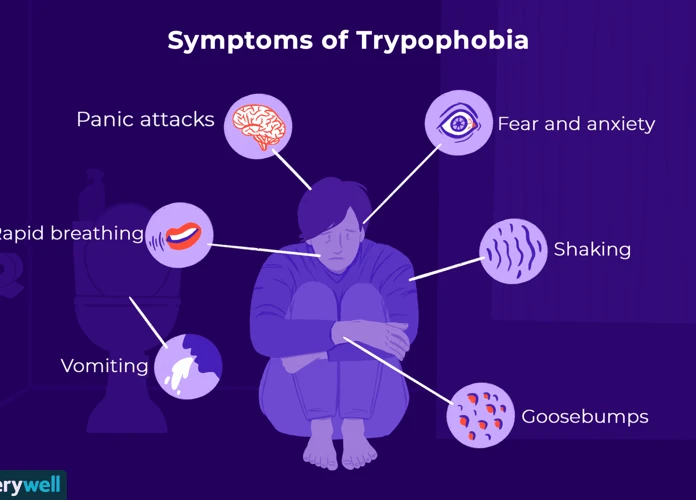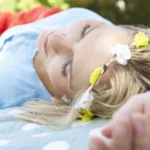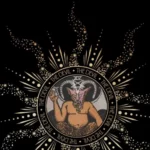Do you often find yourself waking up in a cold sweat, disturbed by bizarre and unsettling dreams revolving around strange patterns and clusters of small holes? If so, you may be experiencing trypophobia dreams. These unsettling dreams can evoke intense emotions of discomfort, fear, and even disgust. But what exactly is trypophobia, and why does it manifest in our dreams? In this comprehensive guide, we will explore the fascinating world of trypophobia dreams, their common triggers, the theories behind them, and the emotional responses they elicit. Whether you are seeking clarity or simply curious about this phenomenon, join us on this journey to unravel the meaning behind your trypophobia dreams.
Contents
- What is Trypophobia?
- Common Triggers for Trypophobia Dreams
- Theories on Trypophobia
- Emotional Responses and Interpretation
- Dealing with Trypophobia Dreams
- Conclusion
-
Frequently Asked Questions
- What are some common symptoms of trypophobia?
- Can trypophobia affect dreams?
- Are trypophobia dreams considered a psychological disorder?
- What are the most common triggers for trypophobia dreams?
- Why do some people have trypophobia?
- How do trypophobia dreams make people feel?
- Can trypophobia dreams have symbolic interpretations?
- What can I do to cope with trypophobia dreams?
- Are there any therapeutic techniques to manage trypophobia dreams?
- When should I seek professional help for trypophobia dreams?
- References
What is Trypophobia?
Trypophobia is the irrational and inexplicable fear or aversion to clusters of small holes or patterns. It is characterized by intense feelings of discomfort, disgust, and even fear when exposed to images or objects that contain these patterns. While trypophobia is not officially recognized as a psychological disorder, it is still a widely experienced phenomenon that can cause significant distress for those who have it. The exact cause of trypophobia is still unknown, and there are multiple theories surrounding its origins. Some believe it could be an evolutionary response, while others propose conditioning and association as possible explanations. Whether you are personally affected by trypophobia or simply curious about this intriguing fear, understanding its nature is the first step towards gaining insight into its impact on our dreams and emotions.
Common Triggers for Trypophobia Dreams
Triggers for trypophobia dreams can vary, but they often revolve around specific types of patterns or objects that evoke discomfort and distress. One common trigger is natural patterns, such as clusters of seeds or holes found in fruits like pomegranates or lotus pods. These patterns may unconsciously elicit a sense of unease and anxiety in individuals with trypophobia. Man-made objects can also be triggers, such as objects with honeycomb-like textures or repetitive patterns like the surface of a sponge. Biological entities, such as beehives or coral reefs, can evoke trypophobia dreams due to their intricate structures and clusters. Interfaces and screens, like speaker holes or pixelated images, have also been reported to trigger trypophobia. It’s important to note that triggers can vary from person to person, and what may cause discomfort for one individual may not affect another in the same way. However, understanding these common triggers can provide insight into the types of objects and patterns that may appear in trypophobia dreams.
Natural Patterns
Natural patterns, such as beehives, coral, or clusters of seeds, can be a common trigger for trypophobia dreams. It is believed that these patterns, when presented in close proximity, can evoke feelings of unease and discomfort due to their repetitive and clustered nature. The intricate and organic arrangements of these natural patterns may overwhelm the senses and create a sense of unease in individuals with trypophobia. These dreams may involve vivid images of natural objects with clusters of holes, causing a strong emotional response within the dreamer. Understanding the impact of natural patterns on trypophobia dreams can provide valuable insight into the subconscious mind and its response to these stimuli.
Man-Made Objects
Man-made objects can also act as triggers for trypophobia dreams. These objects often feature repetitive patterns, holes, or clusters that can cause unease and discomfort. Examples of man-made objects that may evoke trypophobia include lotus seed pods, beehives, sponges, and various types of machinery with hole-filled surfaces. The precise reason behind the aversion to these objects is still a topic of debate. Some experts suggest that our brain’s instinctual response to these patterns is rooted in our survival instincts, where irregular holes could signify a potential threat or danger. Others argue that it could be a learned response, as exposure to negative experiences or associations involving these objects may have created a subconscious fear response. Regardless of the underlying cause, trypophobia dreams involving man-made objects can be deeply unsettling and provoke strong emotional reactions.
Biological Entities
Biological entities, such as insects or animals with unique patterns and textures, are often a common trigger for trypophobia dreams. The sight of bees with their honeycomb-like structures, lotus pods, or even certain plant seeds can evoke a strong sense of revulsion and discomfort in individuals who have trypophobia. These natural patterns seem to tap into a deep-rooted aversion to irregular clusters of small holes, creating a profound emotional response. The intricate and repetitive arrangements found in biological entities can intensify the feelings of unease and disgust. Understanding the role of biological entities in trypophobia dreams can help shed light on the mysterious nature of this fascinating phobia.
Interfaces and Screens
Interfaces and screens can also serve as triggers for trypophobia dreams. In our modern digital age, we are constantly surrounded by electronic devices and displays. These devices often feature repetitive patterns, such as grids of pixels or tiny perforations on speaker covers. For individuals with trypophobia, these patterns can elicit feelings of discomfort and unease, which may carry over into their dreams. The sight of a laptop screen, a phone display, or even a close-up of a keyboard can evoke a visceral reaction. The association between screens and trypophobia triggers in dreams is a fascinating area for further exploration. Understanding how our subconscious mind interprets these visual stimuli can provide valuable insights into the nature of trypophobia and its effects on our dreaming experience.
Theories on Trypophobia
Theories on trypophobia attempt to explain the origins and underlying causes of this peculiar fear. One prominent theory suggests that trypophobia may stem from an evolutionary response, as certain clusters of holes pose a potential threat in nature. For example, venomous animals often have patterns of small holes on their bodies, and our ancestors may have developed a fear towards these patterns as a survival mechanism. Another theory focuses on conditioning and association, suggesting that individuals may develop trypophobia after witnessing or experiencing a distressing event associated with these patterns. This theory emphasizes the role of learned responses and the brain’s ability to form associations between negative experiences and specific visual stimuli. While these theories provide insight into the possible explanations for trypophobia, further research is needed to fully understand this unique fear and its manifestation in dreams and emotional responses.
Evolutionary Explanation
The evolutionary explanation suggests that trypophobia may have its roots in our ancestors’ survival instincts. Some researchers propose that the aversion to clusters of small holes could be a deeply ingrained response to potential sources of danger, such as harmful insects or venomous organisms. Our brains may be wired to associate these patterns with harm or the risk of infection, triggering a strong aversive response. This theory suggests that trypophobia may be a defense mechanism that has been passed down through generations. While this explanation is not yet proven, it provides an interesting perspective on the origins of this fear and its possible connection to our primal instincts for self-preservation.
Conditioning and Association
Conditioning and association suggest that trypophobia dreams may arise from previous negative experiences or associations with certain patterns or objects. Our brains are wired to make connections and associations between different stimuli, and when a negative experience occurs in relation to a specific pattern, our brains may start to associate that pattern with discomfort or fear. This could then manifest in trypophobia dreams, where the patterns trigger similar emotional responses. For example, if someone had a traumatic experience with a bee’s nest that had small holes, they may develop an aversion to hole patterns. This aversion could then be reinforced through repeated exposure to similar patterns, leading to the development of trypophobia. Understanding the role of conditioning and association in trypophobia can help individuals recognize the underlying causes of their dreams and work towards resolving their fears.
Precursor to Anxiety Disorders
One theory regarding trypophobia is that it may serve as a precursor to anxiety disorders. Individuals who experience trypophobia dreams and the associated feelings of fear and distress may be more prone to developing anxiety-related conditions. This theory suggests that trypophobia dreams may be an early manifestation of underlying anxiety tendencies, serving as a warning sign or an opportunity for early intervention. While more research is needed to fully understand the link between trypophobia and anxiety disorders, exploring this connection offers valuable insights into the potential long-term implications of trypophobia experiences. Understanding and addressing the impact of trypophobia dreams on mental well-being can play a vital role in managing and mitigating anxiety-related concerns in the future.
Emotional Responses and Interpretation
When it comes to trypophobia dreams, the emotional responses and interpretations can vary widely among individuals. One common emotional response is a sense of discomfort and distress. Seeing clusters of small holes or patterns can evoke a feeling of unease or even a physical sensation of itching or crawling skin. Another prevalent emotional response is fear and disgust. The sight of these patterns can trigger a deep-seated phobic reaction, leading to a heightened sense of anxiety and aversion. Some individuals may also attribute symbolic interpretations to their trypophobia dreams, seeing the clusters of holes as representations of deep-rooted fears or unresolved anxieties. Exploring these emotions and understanding their significance can provide valuable insight into the psychological impact of trypophobia dreams and potentially uncover hidden emotional triggers. Whether seeking an explanation for your own emotional responses or seeking to understand a loved one’s experience, the study of trypophobia dreams offers a fascinating glimpse into the complex workings of the human mind and the unique ways in which we interpret and process our emotions.
Discomfort and Distress
Experiencing trypophobia dreams can elicit strong emotional responses, such as discomfort and distress. When faced with images or objects containing clusters of small holes, individuals with trypophobia often feel a sense of unease, uneasiness, and physical discomfort. This distress can also extend to trypophobia dreams, where the unsettling patterns evoke intense feelings of discomfort, leading to a restless and disturbed night’s sleep. The exact reasons for this emotional response are not fully understood, but it may be related to an inherent aversion to patterns that resemble disease or potential harm. Additionally, the fear of the unknown and the unfamiliar can contribute to the overall discomfort experienced in trypophobia dreams. Understanding these emotional responses is crucial in comprehending the impact trypophobia can have on our subconscious mind.
Fear and Disgust
Fear and disgust are the primary emotional responses associated with trypophobia. When confronted with images or objects that contain clusters of small holes or patterns, individuals with trypophobia may experience a deep sense of fear and an overwhelming feeling of disgust. This response is often accompanied by physical sensations, such as increased heart rate, sweating, and a sense of unease. The fear and disgust provoked by trypophobia dreams can be intense and difficult to shake off, leaving individuals feeling unsettled and anxious. Understanding the emotional impact of trypophobia is crucial in addressing and managing these intense reactions.
Symbolic Interpretations
Symbolic interpretations of trypophobia dreams can vary greatly depending on an individual’s personal experiences and beliefs. For some, these dreams may be seen as a reflection of deep-seated fears or anxieties in their waking lives. The clusters of small holes may represent feelings of vulnerability or being overwhelmed by certain situations or relationships. Alternatively, trypophobia dreams may symbolize a fear of the unknown or a sense of powerlessness. It’s important to note that dream symbolism is highly subjective, and the interpretation of trypophobia dreams should be considered within the context of an individual’s unique experiences and emotions.
Unresolved Fears and Anxieties
Unresolved fears and anxieties play a significant role in the interpretation of trypophobia dreams. These dreams can act as a reflection of our subconscious mind, bringing attention to deep-seated fears and anxieties that we may not have fully addressed or resolved. The unsettling nature of trypophobia triggers can symbolize hidden fears and emotional distress that are trying to surface. It is important to pay attention to the specific elements and emotions present in these dreams, as they can provide valuable insights into the areas of our lives that require attention and healing. By acknowledging and addressing these unresolved fears and anxieties, we can work towards finding inner peace and alleviating the distressing influence they may have on our dreams and overall well-being.
Dealing with Trypophobia Dreams
Dealing with trypophobia dreams can be challenging, as they often evoke intense emotions and discomfort. However, there are strategies you can employ to help manage and cope with these unsettling dreams. First and foremost, increasing awareness and understanding of trypophobia can provide a sense of control and lessen the impact of these dreams. Recognizing that trypophobia is a common experience and not a reflection of personal weakness is essential. Additionally, practicing relaxation techniques, such as deep breathing or meditation, can help reduce anxiety and stress associated with trypophobia dreams. Seeking therapeutic techniques, such as cognitive-behavioral therapy (CBT), can also be beneficial in managing and overcoming trypophobia dreams. Lastly, if trypophobia dreams significantly impact your daily life and emotional well-being, it may be necessary to seek professional help from a qualified therapist who specializes in anxiety disorders or phobias. Remember, you are not alone in dealing with trypophobia dreams, and there are resources available to support you on your journey towards better dream experiences and overall well-being.
Awareness and Understanding
Awareness and understanding play a crucial role in dealing with trypophobia dreams. By becoming aware of your fear and recognizing its triggers, you can start to gain a deeper understanding of why certain patterns or clusters of small holes evoke such strong emotional responses. It is important to educate yourself about trypophobia and the various theories surrounding its origins, as this knowledge can help demystify and normalize your experiences. Additionally, understanding that trypophobia is not a recognized disorder can provide reassurance that you are not alone in your feelings. By developing this awareness and understanding, you can actively work towards managing and reducing the impact of trypophobia dreams on your overall well-being.
Therapeutic Techniques
Therapeutic techniques can be valuable in managing and overcoming trypophobia dreams. One approach is cognitive-behavioral therapy (CBT), which focuses on identifying and challenging negative thought patterns and behaviors associated with trypophobia. This therapy aims to reframe the individual’s perception of small holes and patterns, reducing their anxiety and fear response. Another technique is exposure therapy, where individuals gradually expose themselves to images or situations that trigger their trypophobia in a controlled and safe environment. This process allows them to desensitize and reduce their emotional response over time. Additionally, relaxation techniques, such as deep breathing exercises and progressive muscle relaxation, can help individuals manage their anxiety and distress when experiencing trypophobia dreams. It’s important to consult with a mental health professional who specializes in anxiety disorders to determine the most suitable therapeutic approach for addressing trypophobia dreams and related concerns.
Seeking Professional Help
If you find that your trypophobia dreams are causing significant distress or interfering with your daily life, it may be beneficial to seek professional help. A mental health professional, such as a therapist or psychologist, can provide guidance and support in understanding and managing your trypophobia. They can help you explore the underlying causes of your fear and work through any related anxieties. Additionally, they may recommend therapeutic techniques such as cognitive-behavioral therapy (CBT) or exposure therapy to gradually desensitize you to your triggers. Seeking professional help can offer you a safe and confidential space to discuss your feelings and develop coping strategies, ultimately empowering you to regain control over your trypophobia and experience a better quality of life.professional help
Conclusion
In conclusion, trypophobia dreams can be unsettling and evoke a range of emotions, including discomfort, fear, and disgust. While the exact meaning behind these dreams may vary from person to person, they often reflect unresolved fears and anxieties. It is important to be aware of these dreams and understand their possible triggers, such as natural patterns, man-made objects, biological entities, and interfaces/screens. While there are theories that explain trypophobia in terms of evolutionary response, conditioning and association, and its potential link to anxiety disorders, it is essential to remember that trypophobia itself is not officially recognized as a psychological disorder. If trypophobia dreams cause significant distress or interfere with daily life, seeking professional help and employing therapeutic techniques may be beneficial. By increasing awareness and understanding of trypophobia dreams, individuals can navigate and cope with these experiences more effectively. Remember, you are not alone in experiencing trypophobia dreams, and by unraveling their meaning, you can gain a deeper understanding of your own fears and emotions.
Frequently Asked Questions
What are some common symptoms of trypophobia?
Common symptoms of trypophobia include feelings of distress, discomfort, and fear when exposed to clusters of small holes or patterns. Physical reactions may include sweating, rapid heartbeat, and even nausea.
Can trypophobia affect dreams?
Yes, trypophobia can manifest in dreams and often creates vivid and unsettling dream scenarios centered around clusters of small holes or patterns.
Are trypophobia dreams considered a psychological disorder?
No, trypophobia dreams are not considered a psychological disorder on their own. However, they can be a symptom of underlying anxiety or phobias.
What are the most common triggers for trypophobia dreams?
Common triggers for trypophobia dreams include natural patterns like beehives or coral, man-made objects like honeycombs or perforated surfaces, biological entities such as insects, and interfaces or screens with patterns of small holes.
Why do some people have trypophobia?
The exact cause of trypophobia is still uncertain. However, some theories suggest that it may be an evolutionary response, conditioning and association, or even a precursor to anxiety disorders.
How do trypophobia dreams make people feel?
Trypophobia dreams can elicit intense emotions of discomfort, fear, and disgust. Waking up from these dreams can leave individuals feeling distressed and unsettled.
Can trypophobia dreams have symbolic interpretations?
Yes, some individuals believe that trypophobia dreams may have symbolic interpretations related to unresolved fears, anxieties, or feelings of being overwhelmed.
What can I do to cope with trypophobia dreams?
Some strategies for coping with trypophobia dreams include increasing awareness and understanding of the phobia, practicing relaxation techniques, and seeking professional help if needed.
Are there any therapeutic techniques to manage trypophobia dreams?
Therapeutic techniques such as cognitive-behavioral therapy (CBT) and exposure therapy can be utilized to help individuals manage trypophobia dreams and reduce their associated distress.
When should I seek professional help for trypophobia dreams?
If trypophobia dreams significantly impact your daily life, cause severe distress, or interfere with your overall well-being, it may be beneficial to seek the guidance of a mental health professional who can provide appropriate support and techniques to manage these dreams.







